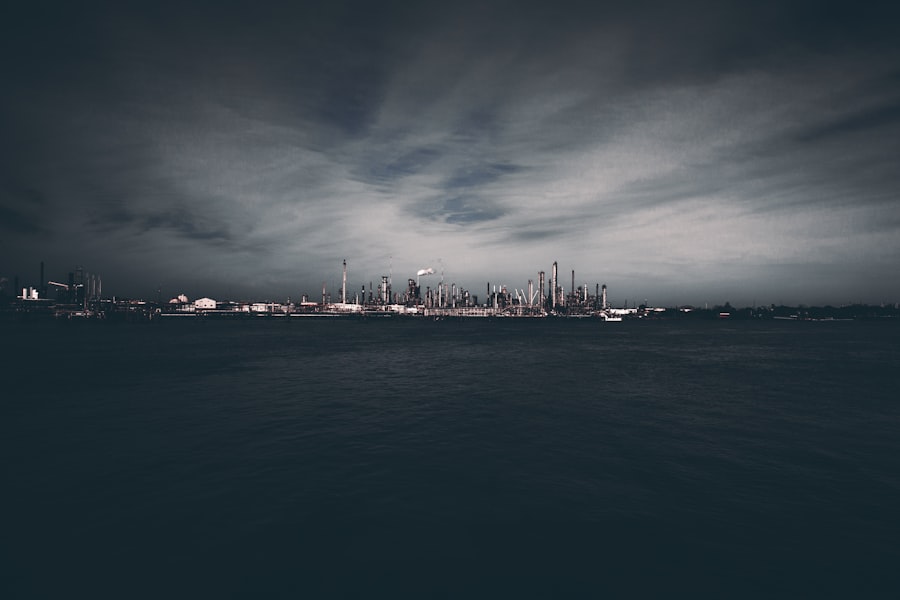In the 2014 film “Godzilla,” you are invited to witness a reimagining of the iconic monster that has captivated audiences for decades. This iteration of Godzilla is not merely a creature of destruction; it embodies a complex narrative that intertwines themes of humanity, nature, and the consequences of our actions. As you delve into the film, you will find that Godzilla serves as both a harbinger of chaos and a potential saviour, challenging your perceptions of what it means to be a monster.
The film presents Godzilla as a force that reflects humanity’s own struggles, fears, and aspirations, making it a rich subject for exploration. The 2014 movie positions Godzilla within a contemporary context, where the stakes are higher than ever. You will see how the film draws parallels between the monster’s rampage and the real-world issues of environmental degradation and nuclear power.
This duality invites you to consider not just the spectacle of destruction but also the underlying messages about responsibility and coexistence. As you navigate through the narrative, you will uncover layers of meaning that elevate Godzilla from a mere cinematic monster to a symbol of deeper societal concerns.
Summary
- Godzilla’s role in the 2014 movie is explored as a force of nature and destruction, impacting humanity and the ecosystem.
- The symbolism of Godzilla is debated, with some seeing it as a force for nature and others as a destructive entity.
- Godzilla’s battles against other monsters raise questions about whether it is protecting humanity or acting out of self-preservation.
- Godzilla’s influence on restoring balance to the ecosystem is a key aspect of its role in the movie.
- The moral dilemma of whether Godzilla’s destruction is justified is a central theme in evaluating its role as a force for good.
Godzilla’s Impact on Humanity: Destruction or Protection?
The Protector of the Natural World
Godzilla’s actions are not merely random acts of violence; they are responses to threats that endanger not only his existence but also the balance of nature itself. In this light, you may begin to see Godzilla as a protector of the natural world, fighting against forces that threaten to disrupt the delicate equilibrium of life on Earth. The film introduces other monstrous entities, such as the MUTO (Massive Unidentified Terrestrial Organism), which pose significant threats to humanity and the environment.
A Reluctant Hero Emerges
In confronting these adversaries, Godzilla emerges as a reluctant hero, compelled to act not out of malice but out of necessity. You may find yourself grappling with the idea that sometimes destruction is a means to an end—a way to safeguard what remains.
Morality in a Complex World
This nuanced portrayal invites you to reflect on the complexities of morality in a world where survival often necessitates difficult choices.
The Symbolism of Godzilla: A Force for Nature or Destruction?

Godzilla has long been a symbol of nature’s wrath, representing humanity’s hubris in the face of environmental catastrophe. In the 2014 film, this symbolism is amplified as you witness the consequences of mankind’s actions on the planet. The monster embodies the fury of nature responding to human transgressions, particularly in relation to nuclear power and ecological neglect.
As you engage with the narrative, you may find yourself contemplating how Godzilla serves as a reminder of the fragility of human existence in an increasingly industrialised world. Yet, there is another layer to Godzilla’s symbolism that cannot be overlooked. He is not merely a force of destruction; he also represents resilience and regeneration.
In many ways, Godzilla is a manifestation of nature’s ability to endure and adapt despite human interference. As you observe his battles against other monsters, you may come to appreciate that his existence is intertwined with the very fabric of life on Earth. This duality—both destructive and protective—encapsulates the complexity of nature itself, urging you to consider your own relationship with the environment.
Godzilla’s Battle Against Other Monsters: Protecting Humanity or Self-Preservation?
| Monster | Outcome | Damage Inflicted | Human Lives Saved |
|---|---|---|---|
| King Ghidorah | Victory | High | Thousands |
| Mothra | Assistance | Low | Hundreds |
| MechaGodzilla | Defeat | Extreme | None |
The climactic battles in “Godzilla” raise intriguing questions about motivation and intent. As you watch Godzilla confront formidable foes like the MUTO, it becomes evident that his actions are driven by more than just self-preservation. While he fights to protect his territory and ensure his survival, there is an underlying sense of duty to restore balance in a world thrown into disarray by other monstrous beings.
You may find yourself pondering whether Godzilla’s battles are ultimately for humanity’s benefit or if they are simply a means to secure his own existence. This conflict between self-interest and altruism adds depth to Godzilla’s character. You might consider how his struggles mirror humanity’s own battles against existential threats—be they environmental disasters or societal collapse.
In this sense, Godzilla becomes a reflection of your own struggles for survival and protection in an unpredictable world. The film invites you to question whether true heroism lies in self-sacrifice or if it can coexist with self-preservation, ultimately leaving you with more questions than answers.
The Role of Godzilla in Restoring Balance to the Ecosystem
As you delve deeper into Godzilla’s role within the film, it becomes clear that he is not merely a destructive force but rather a crucial player in restoring ecological balance. The narrative suggests that Godzilla’s presence is necessary for maintaining harmony within the natural world. When faced with threats like the MUTO, he acts as a counterbalance, ensuring that no single entity can dominate or disrupt the ecosystem.
This perspective invites you to reconsider your understanding of nature as something that requires guardianship rather than domination. In this light, Godzilla can be seen as an embodiment of nature’s resilience—a reminder that ecosystems have their own mechanisms for self-regulation. As you reflect on this theme, you may find yourself contemplating humanity’s role in this delicate balance.
Are we stewards of the Earth or its greatest threat? The film challenges you to confront these questions head-on, urging you to recognise that our actions have far-reaching consequences on the world around us.
Godzilla’s Influence on Human Behaviour and Society

The presence of Godzilla in the 2014 film extends beyond mere destruction; it serves as a catalyst for change within human society. As cities crumble and chaos ensues, you witness how individuals respond to fear and uncertainty. The film captures a range of human emotions—from panic and despair to courage and resilience—as people grapple with their vulnerability in the face of such overwhelming power.
You may find yourself reflecting on how crises can bring out both the best and worst in humanity. Moreover, Godzilla’s impact on society raises questions about collective responsibility and unity in times of crisis. As characters band together to confront the threat posed by monsters, you are reminded of the importance of cooperation and solidarity in overcoming adversity.
The film suggests that while Godzilla may be a force of nature, it is ultimately human behaviour that determines how society responds to challenges. This interplay between monster and humanity invites you to consider your own role in shaping a better future amidst uncertainty.
The Moral Dilemma: Is Godzilla’s Destruction Justified?
As you engage with the film’s narrative, you are confronted with a profound moral dilemma: Is Godzilla’s destruction justified? On one hand, his actions lead to widespread devastation and loss of life; on the other hand, they serve as a necessary response to threats that endanger both humanity and nature itself. This tension forces you to grapple with complex ethical questions about collateral damage and the greater good.
The film does not provide easy answers; instead, it encourages you to explore the grey areas of morality. You may find yourself questioning whether it is acceptable for one being—no matter how powerful—to wreak havoc if it ultimately serves a higher purpose. This moral ambiguity adds depth to Godzilla’s character and challenges your perceptions of right and wrong in an increasingly complicated world.
Evaluating Godzilla’s Role as a Force for Good in the 2014 Movie
In conclusion, “Godzilla” (2014) presents a multifaceted portrayal of its titular character that transcends traditional notions of good and evil. As you reflect on his role throughout the film, it becomes evident that Godzilla embodies both destruction and protection—a duality that mirrors your own struggles with morality and responsibility in an interconnected world. His battles against other monsters serve not only as thrilling spectacle but also as poignant reminders of nature’s resilience and humanity’s fragility.
Ultimately, Godzilla emerges as a complex symbol—a force for good that compels you to confront uncomfortable truths about your relationship with nature and society. The film invites you to consider how your actions impact the world around you and challenges you to embrace your role as a steward rather than an adversary. In this way, Godzilla transcends his status as a mere monster; he becomes a powerful metaphor for hope, resilience, and the potential for redemption amidst chaos.
